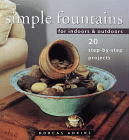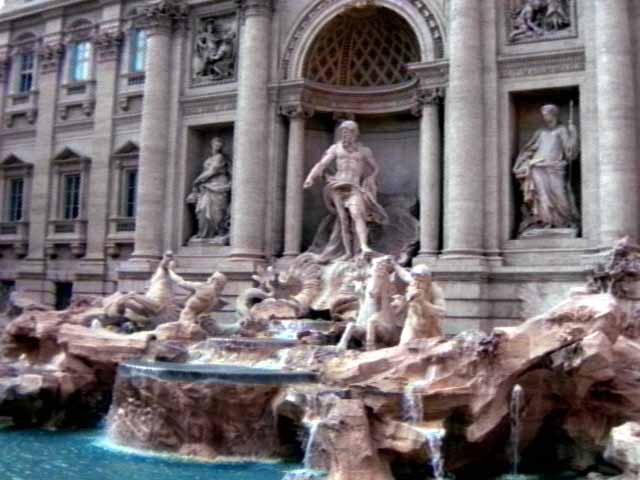

Most garden fountains take the form of a simple spout and a basin or bowl into which the water pools. But fountains can range in their design from the basic to elaborate creations with tiered bowls, bronze or marble sculptures and statuary, towering sprays highlighted by colored spotlights in modern times. Many places even have elaborate fountains controlled by computer to adjust the force and height of numerous water jets resulting in an effect billed as "dancing fountains." The natural inspiration for fountains seems to have originated with natural springs, which most ancient cultures regarded as sacred sites, inhabited by gods and water spirits such as dryads, and nyads. Some of this supposition comes from Greece. During the Aegean civilization as in later Hellenic Greece, springs were considered very sacred places. Shrines and temples were erected around them, with simple to ornate artificial basis to catch and pool the sacred waters. One excavated sacred fountain at the city of Lerna were surrounded by elaborated columns. The city or Corinth was especially noted for its fountains. It had one especially noteworthy spring shrine dedicated to the water nymph Pirene. The Greek fountains were also for practical purposes was well as religious worship. They were like later incarnations of the town well, providing water for all.
In Ancient Babylon, each of the more important gods had their own temple. Temple services to worship these gods were conducted in open courts within the temples, open courts which contained fountains for purposes of ablutions and purification.
In Islamic nations of the East, fountains were and are so important they are more akin to an institution. This is especially true of the public drinking fountains which are known as sebeels. A simple spout falling into a basin in a plain or ornately carved niche is one of the most common types. The more elaborate designs take the form of an ornately decorated pavillion.
The Ancient Romans took fountain technology to new heights and unlimited uses. Public fountains, baths, and spas were common. The more decorative fountains were found in the courtyards of the aristocrats. The Romans were the took the devlopment of the of the nymphaeum, a decorative type of fountain that originated in the Hellenistic era, and pushed it to new heights of pleasurable decadence. The nymphaea became elaborate pleasure houses. The fountain proper in such places would usually be a multiple basin arrangement with a jet of water issueing forth from a sculpture of one type or another. In later "early" Christian periods, fountains were still in use in practical and sacred applications. Fountains were built in the atrium court of the Christian basilica allegedly to symbolize purification. These religious fountains continued to be used in the monasteries and convents of western Europe and the Byzantine Empire.
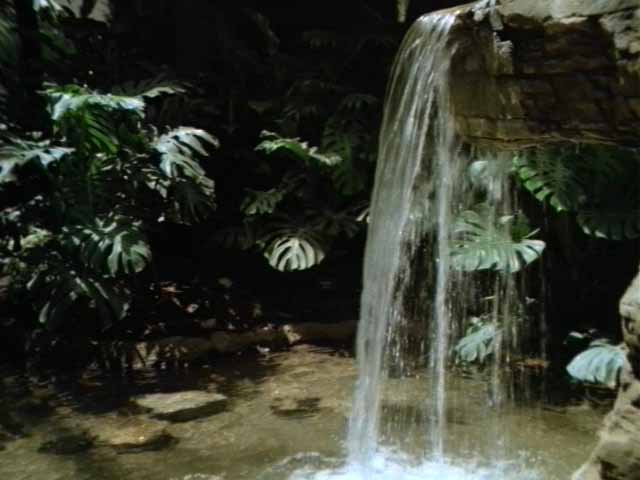
In the early middle ages. in Europe, the use of ornamental and architecturally treated fountains fell out of fashion. Starting about the 12th century though, public fountains began to crop up once more. Spring fountains began to get architectural enhancements once more. The most common type at this time was the circular or octagonal basin with a center column or pier containing a group of water emitting spouts.
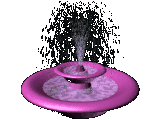
In Italy during the Renaissance period, sculpture became very prominant as a feature of fountain design. Leonardo da Vinci even had a hand in designing some fountains. Following the Renaissance, during the Italion Baroque period, fountain design became very complex. Rome, already noted for its fountains, has a prime example in the Fountain of the Rivers in the Pazza Navona, built by Giovanni Bernini between 1648 and 1651. Also of note is the Trevi fountain which was completed in 1762 by Niccolo Sali. Fountains such as these were thought to be symbols of the city, its pazzas and churches, under papal dictate.
Besides the public fountains, this period of Italian development also included a large number of original villa garden fountains. The disigns of these more private fountains was often spectacular, and sometimes whimsical. Spcial effects were made possible by mechanical means. The water organ, for instance, at the Villa d'Este, Tivoli(1549), played music only when certain pavement stones were stepped on. The hillsides near most of these fountains were exploited to use gravity feed in many of the fountain designs. This way upper fountains could supply lower ones and so on. The Italians set the precedent for the design of monumental civic fountains and for the ornamental garden fountains in northern and western Europe.
In France, an early ornamental fountain is the Fountain of the Innocents, built about 1550 in Paris by Jean Goujon. It is an original work that does not copy Italian models. In Paris in the Luxembourg Garden, resides the Medici fountain, designed by Salomon de Brosse. It is a good example of what are known as "niche" fountains. By far, the most elaborately spectacular of the French fountians are those at the palace of Versailles. These fountains were part of the large gardens designed by Andre Lenotre in 1661. His design included large reflecting pools among other things. As entertainment, fireworks displays were often given near the fountain, utilizing the fountain as part of the display. The artistry of these fountains overshadows the engineering genius that went into designing the plumbing to supply sufficient volume and pressure of water for the grandiose displays.
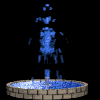
During the 19th century in Chatsworth, England, a disigner named Sir Joseph Paxton created a number of noteworthy fountains. In one fountain of his creation, a single water jet reaches a height of about 260 feet or 80 meters above a formal reflecting pool. Another of his designs in Chatsworth, is a willow tree sculpted from copper which will drip water upon those who stand under it.
In modern times fountains have retained their poularity, but modern designs often lack the quality of fountains in earlier times and also do not seem to display as much imagination. Modern fountains can be found in the center of many cities and towns, in shopping malls, in parks, and still in private gardens. Often modern fountains are combined with the landscape design of a swimming pool area. Bird baths are often combined with fountains or set up very nearby. Fountains are also combined with garden ponds.
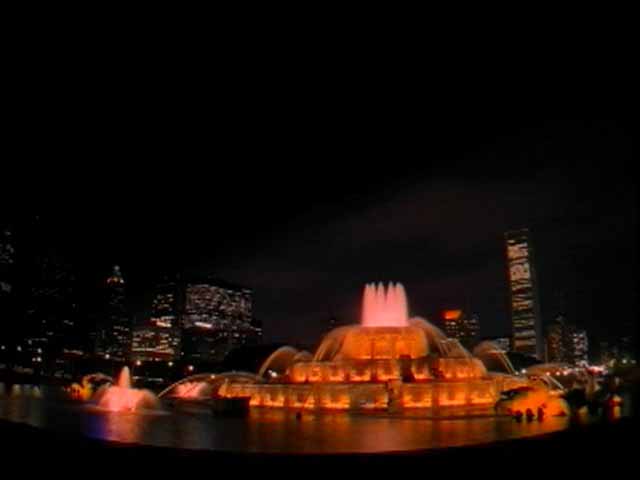
What may have been a contributing factor to the belief that natural springs and fountains were sacred was the effect of aeriation upon water. When water is spewed into the air it absorbs more oxygen, which acts as a natural form of water purification. The water vapor and misty air around springs and fountains creates more humidified air which in most cases is more soothing to breathe. Consider how useful ultrasonic humidifiers are in the treatment of chest infections. Another factor in the aeriaation of water is that negative ions are generated around particularly active water sources, especially large waterfalls. Negative ions are very healthy and can improve overall mood and physical well being.
These factors may be also why things like health and healing are so associated with fountains and springs. The "Fountain of Youth" is a good example and the healing springs at Lourdes, France also come to mind. Other fators are of course mineral content in natural springs. Minerals can treat and heal a wide variety of disorders that may be due simply to mineral deficiencies. Put all the good physical feelings and psychological ones together and it is easy to see why fountains were both popular and sacred. Not to mention that even the most uneducated of peoples could easily figure out that water was the source of all life. Without water everything and everyone rather quickly perish.
The gardener or even the homeowner whose only garden is the surrounding yard, could improve their properties with a well chosen fountain, suitable for their decors and budgets. If other structures in the garden and yard are to be erected, such as gazebos, birdbaths, other statuary, and structures, the fountain should be coordinated with these other structures as to overall style and appearance. In any case you can't go wrong adding your own "sacred spring" to your lawn or garden.

One of the best resources I have found for fountains and other garden structures is Sculpture Design Imports. Sculpture Design Imports and their portfolios can be viewed online by clicking on the fountain.
Reference Sources:

